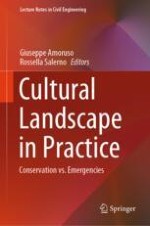2019 | OriginalPaper | Buchkapitel
Ichnography, Orthography and Scenography as Forms of Tracing the Past: A Reconstitution of the Roman Forum of Ebora Liberalitas Julia
verfasst von : Mariana Martins de Carvalho
Erschienen in: Cultural Landscape in Practice
Aktivieren Sie unsere intelligente Suche, um passende Fachinhalte oder Patente zu finden.
Wählen Sie Textabschnitte aus um mit Künstlicher Intelligenz passenden Patente zu finden. powered by
Markieren Sie Textabschnitte, um KI-gestützt weitere passende Inhalte zu finden. powered by
